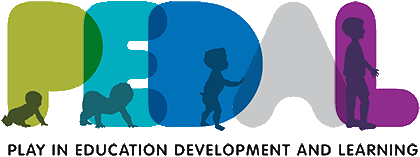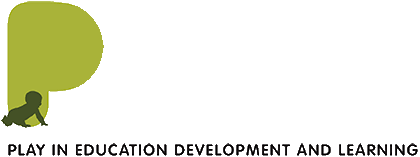A story of zest, curiosity…and play!
Most of my earliest memories are of play. Days of pretend play with my sister. Making seaweed soup with a bucket and spade at the beach. A treasure hunt on a birthday. Investigating tadpoles in a stream. In fact, few things capture the joy of childhood like the energy that comes with play, and it is this enthusiasm that psychologists call “zest”.
Both adults and children with more zest tend to be happier, and when it comes to the classroom, zest means the ability to approach learning with enthusiasm.
Zest is part of a cocktail of powerful positive emotions in the classroom: together with curiosity and interest, it drives our inner motivation to learn, and to continue to learn when things get difficult. In psychology, these ideas are thought of as separate: zest is enthusiasm even in the face of challenges, curiosity is the desire for missing knowledge, and interest is a liking of novel information. But in practice they can be difficult to distinguish as they have so much in common, and in fact even researchers disagree as to where one ends and another begins. What we can say, though, is that these feelings are behind experiences of deep, joyful learning.
So how can we harness these positive dispositions in classrooms? You might have guessed it: play!
Or at the very least, playful learning, which the LEGO Foundation defines as a learning situation which has five characteristics of play: it is actively engaging, meaningful, socially interactive, joyful and iterative (in the sense that different possibilities are tested out). Sounds ambitious? So it should be, but it is also true that harnessing the power of play in the classroom isn’t always easy. Nonetheless, there are a number of things teachers can do.
Starting with a spark
Curiosity is often thought about as an information gap: we know we are missing a crucial bit of information and we have a ‘tip of the tongue’ feeling that drives us to fill that gap in our knowledge. Creating situations that will arouse curiosity therefore means creating information gaps, such as dilemmas, puzzles, ambiguities and conflicting views, and helping students cope with that uncertainty. Another aspect of curiosity is that it often involves asking questions, so a good way to stimulate curiosity is finding a ‘hook’ that will generate questions – whether a scenario, a curious object, a story – and then following those questions to where they lead us. This last step is crucial: if we want students to engage with questions that are meaningful, there needs to be time for finding out the answers. Finally, curiosity is also sometimes thought of as simply exploring, so providing children with opportunities to explore can be a curiosity prompt. Recently a school created a “corridor of curiosities”, lined with shelves full of strange objects, and some researchers planted “curiosity boxes” in classrooms, which had lots of drawers children could open and investigate.
Keeping the fire going
Importantly, though, creating an initial spark is not sufficient: teachers need to sustain this interest even when learning becomes difficult or the novelty has worn off. For this, learning opportunities need to be meaningful to the child or the student. One important theory of motivation states that people have three needs that must be met for them to feel motivated from within: they have to feel in control of the situation and to have agency, they have to feel like they have positive relationships and have a sense of belonging, and they have to feel that they are able to do a task well. These needs are referred to as the needs for autonomy, relatedness and competence. When people are in situations that frustrate these basic needs, their inner motivation will suffer.
What does this mean for the classroom?
Teachers can harness children’s inner drive to learn by creating learning environments where children’s zest, interest and curiosity are ignited, and where their feelings of autonomy, relatedness and competence are supported. In practice this might mean:
- Children have some ownership over the direction their learning takes: For example, some schools use a free choice of activities beyond the early years, while others use whole class projects and inquiries based on questions the children are interested in.
- Mistakes are framed as opportunities for learning and discussion: This means the emphasis is not on giving the correct answer but instead teachers might choose tasks that generate alternative ways of solving a problem or stage disagreements.
- Celebrating questions! Teachers sometimes shut down students’ questions to keep lessons on track, but these questions can in fact drive classroom learning. Some teachers have boxes in their classrooms where students can post questions and the teachers regularly go through them: some questions are best answered straight away, but for others, children can be supported in finding the answers themselves.
- Teachers display warmth and sensitivity: For example, by showing interest in what a child did, by verbalising complex emotions, or by showing understanding when children express negative emotions.
- Children are given the support they need to feel confident in their learning: For example, they might be explicitly taught strategies or helped to plan what needs to be done next. Structures and routines also add to children’s feeling of empowerment in their classroom.
This list is by no means exhaustive, and there are many other factors involved in generating zest and curiosity. For example, novelty, imagination and creativity are also all likely to play an important role in sustaining motivation. But I hope I have provided starting points and avenues to explore – ideas to pique your curiosity.

Useful resources
- Why are students curious in the classroom? (Jirout, 2018)
- ED:Talk – Evidence and Dialogue Toolkit (Hoffman & Ilie, 2019)
- How can adults support the development of children’s self-regulation? (The PRSIST Program)
- The LEGO Foundation: Learning Through Play at School (Park & Stejerne Thomsen, 2019)

Soizic Le Courtois
University of Cambridge PhD Student and former Primary School Teacher

